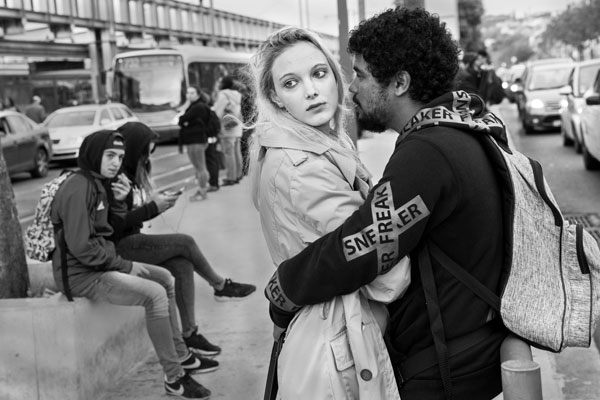6 Simple Techniques For Framing Streets
6 Simple Techniques For Framing Streets
Blog Article
Examine This Report on Framing Streets
Table of ContentsExamine This Report on Framing StreetsRumored Buzz on Framing StreetsHow Framing Streets can Save You Time, Stress, and Money.9 Easy Facts About Framing Streets ShownThe Best Guide To Framing StreetsThe Buzz on Framing Streets
Digital photography style "Crufts Pet dog Show 1968" by Tony Ray-Jones Road digital photography (also often called candid digital photography) is digital photography conducted for art or inquiry that includes unmediated chance encounters and arbitrary occurrences within public areas, generally with the goal of catching images at a decisive or emotional minute by mindful framing and timing. 
The Best Guide To Framing Streets
Susan Sontag, 1977 Road digital photography can concentrate on individuals and their behavior in public. In this respect, the road digital photographer resembles social documentary professional photographers or photographers who also operate in public areas, however with the purpose of capturing relevant occasions. Any of these professional photographers' pictures may record individuals and home noticeable within or from public places, which commonly requires navigating honest concerns and regulations of privacy, safety, and property.
Representations of everyday public life develop a style in virtually every period of world art, starting in the pre-historic, Sumerian, Egyptian and very early Buddhist art durations. Art handling the life of the road, whether within views of cityscapes, or as the leading concept, shows up in the West in the canon of the Northern Renaissance, Baroque, Rococo, of Romanticism, Realistic look, Impressionism and Post-Impressionism.
Framing Streets Can Be Fun For Anyone
Louis Daguerre: "Blvd du Holy place" (1838 or 1839) In 1838 or 1839 the initial photo of numbers in the street was tape-recorded by Louis-Jacques-Mand Daguerre in one of a pair of daguerreotype views taken from his workshop window of the Boulevard du Holy place in Paris. The 2nd, made at the height of the day, reveals an uninhabited stretch of road, while the various other was taken at about 8:00 am, and as Beaumont Newhall records, "The Boulevard, so regularly loaded with a relocating crowd of pedestrians and carriages was perfectly singular, except a person that was having his boots cleaned.
As a result his boots and legs were well specified, however he is without body or head, due to the fact that these were in movement." Charles Ngre, waterseller Charles Ngre. https://www.tumblr.com/framingstreets1/739107565559037952/framing-streets-is-a-timeless-journey-a-journey?source=share was the initial digital photographer to achieve the technological class required to register individuals in motion on the road in Paris in 1851. Digital Photographer John Thomson, a Scotsman working with reporter and social activist Adolphe Smith, published Street Life in London in twelve regular monthly installments this contact form beginning in February 1877
Examine This Report on Framing Streets
Eugene Atget is regarded as a progenitor, not since he was the first of his kind, however as an outcome of the popularisation in the late 1920s of his document of Parisian streets by Berenice Abbott, that was inspired to carry out a similar paperwork of New York City. [] As the city established, Atget assisted to promote Parisian roads as a deserving topic for digital photography.

Fascination About Framing Streets
Andre Kertesz.'s commonly admired Images la Sauvette (1952) (the English-language edition was entitled The Crucial Minute) promoted the idea of taking a photo at what he described the "definitive minute"; "when type and web content, vision and structure combined into a transcendent whole" - 50mm street photography.
Not known Details About Framing Streets
The recording device was 'a surprise cam', a 35 mm Contax concealed beneath his layer, that was 'strapped to the breast and linked to a lengthy cable strung down the best sleeve'. His job had little contemporary impact as due to Evans' sensitivities concerning the originality of his project and the privacy of his subjects, it was not published till 1966, in the book Many Are Called, with an intro written by James Agee in 1940.
Helen Levitt, after that an instructor of children, connected with Evans in 193839. She documented the temporal chalk illustrations - Street photography hashtags that belonged to youngsters's street society in New York at the time, in addition to the children who made them. In July 1939, Mo, MA's brand-new digital photography area included Levitt's job in its inaugural exhibitionRobert Frank's 1958 book,, was considerable; raw and typically out of emphasis, Frank's images examined conventional photography of the time, "challenged all the formal policies set by Henri Cartier-Bresson and Walker Evans" and "flew in the face of the wholesome pictorialism and genuine photojournalism of American publications like LIFE and Time".
Report this page